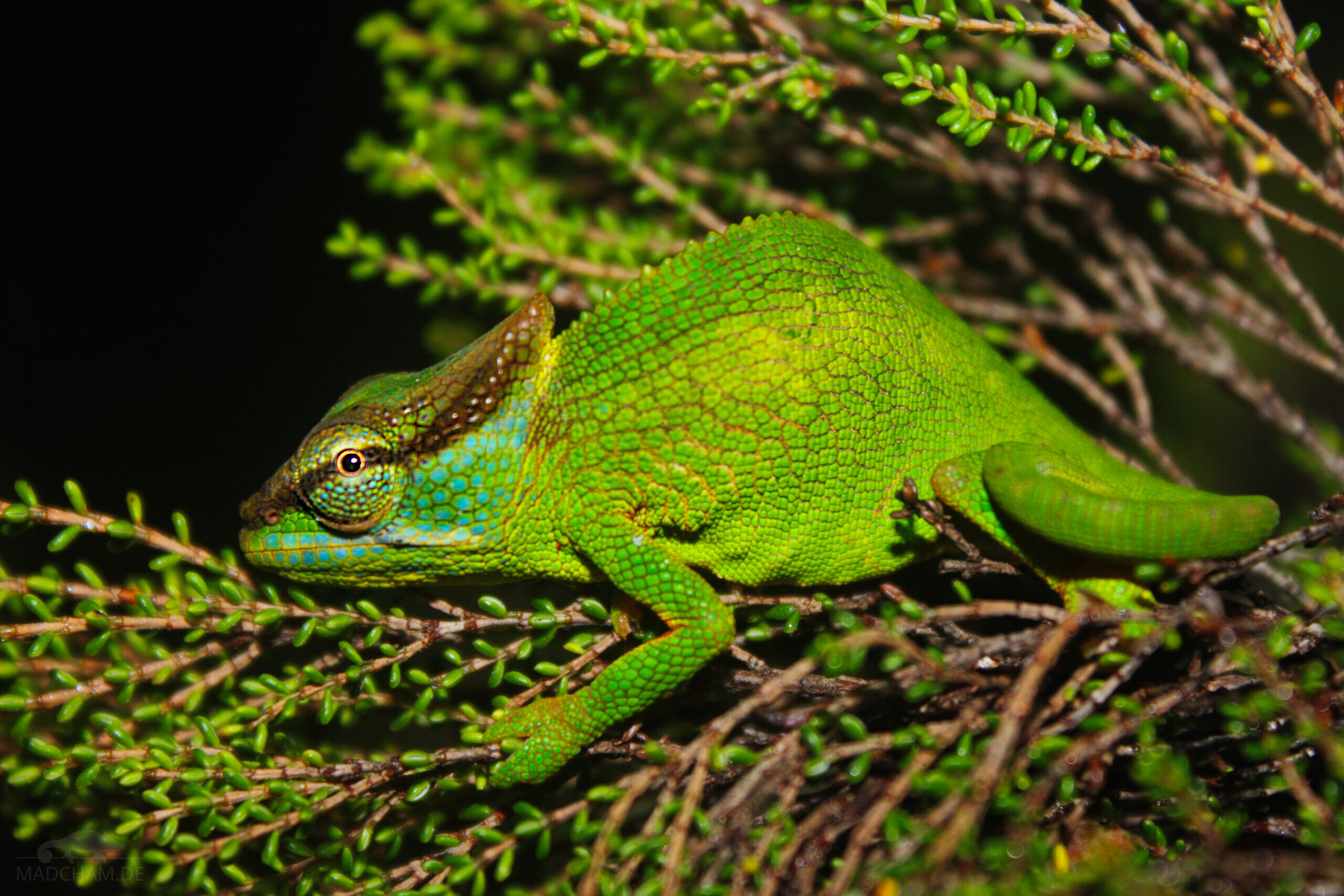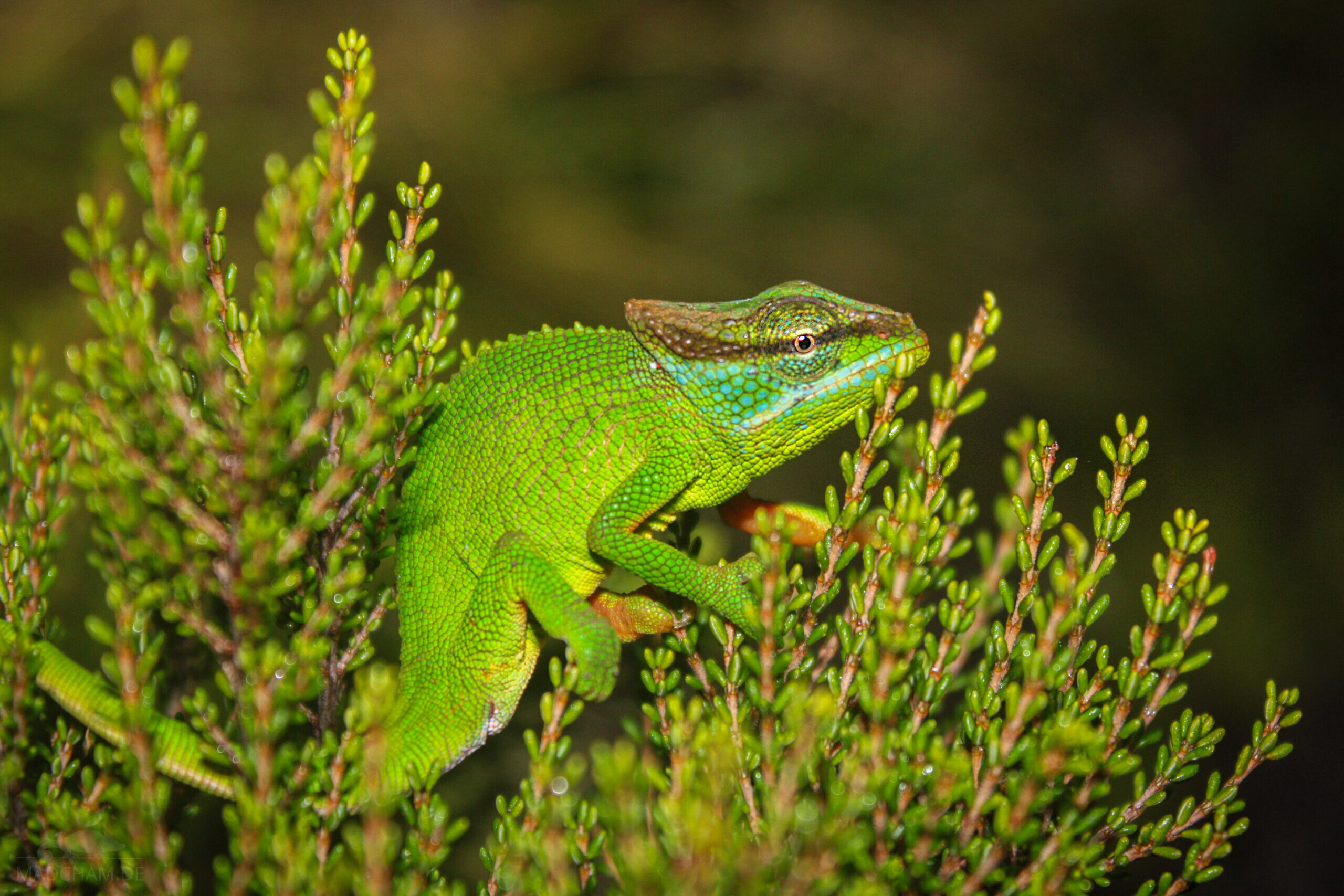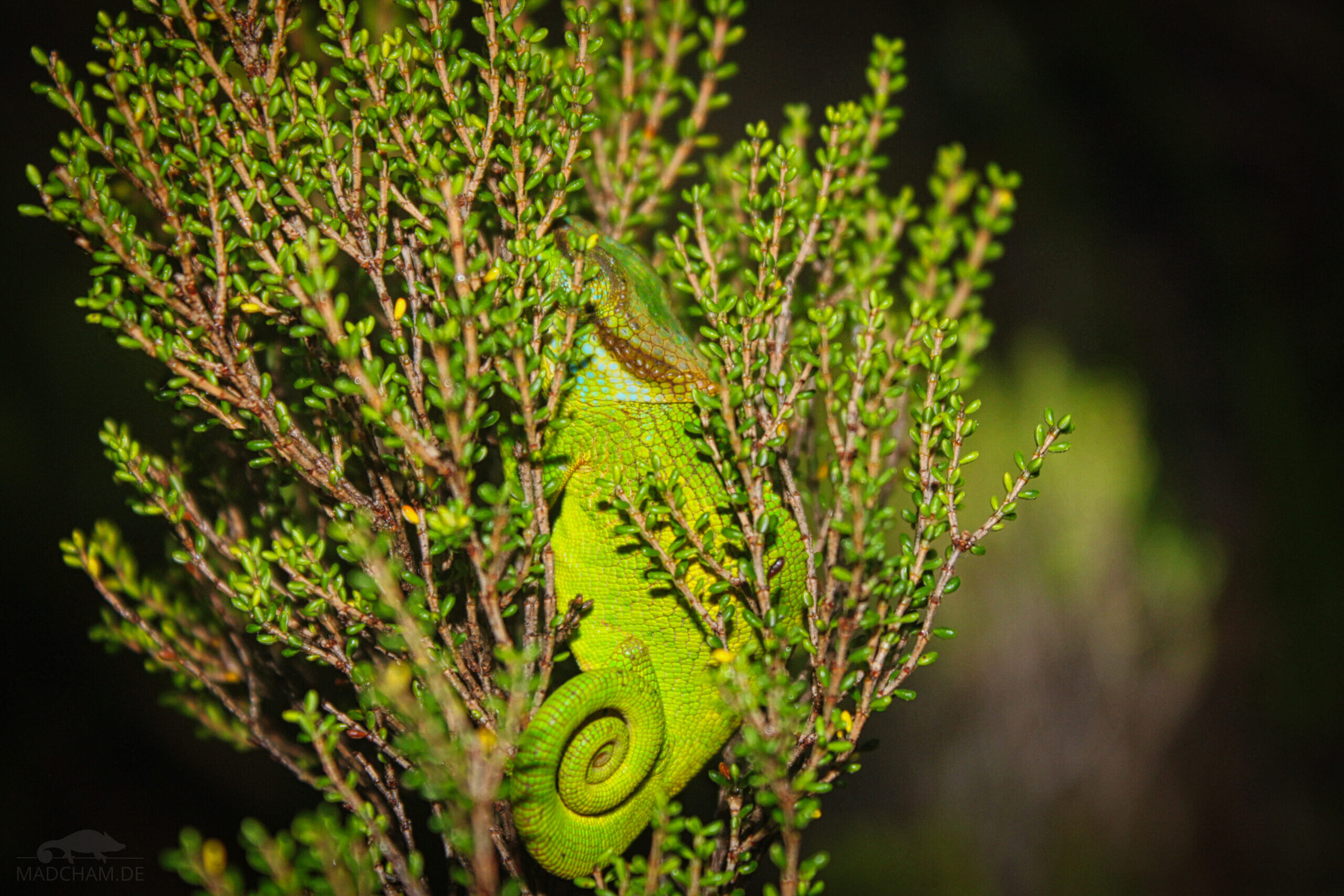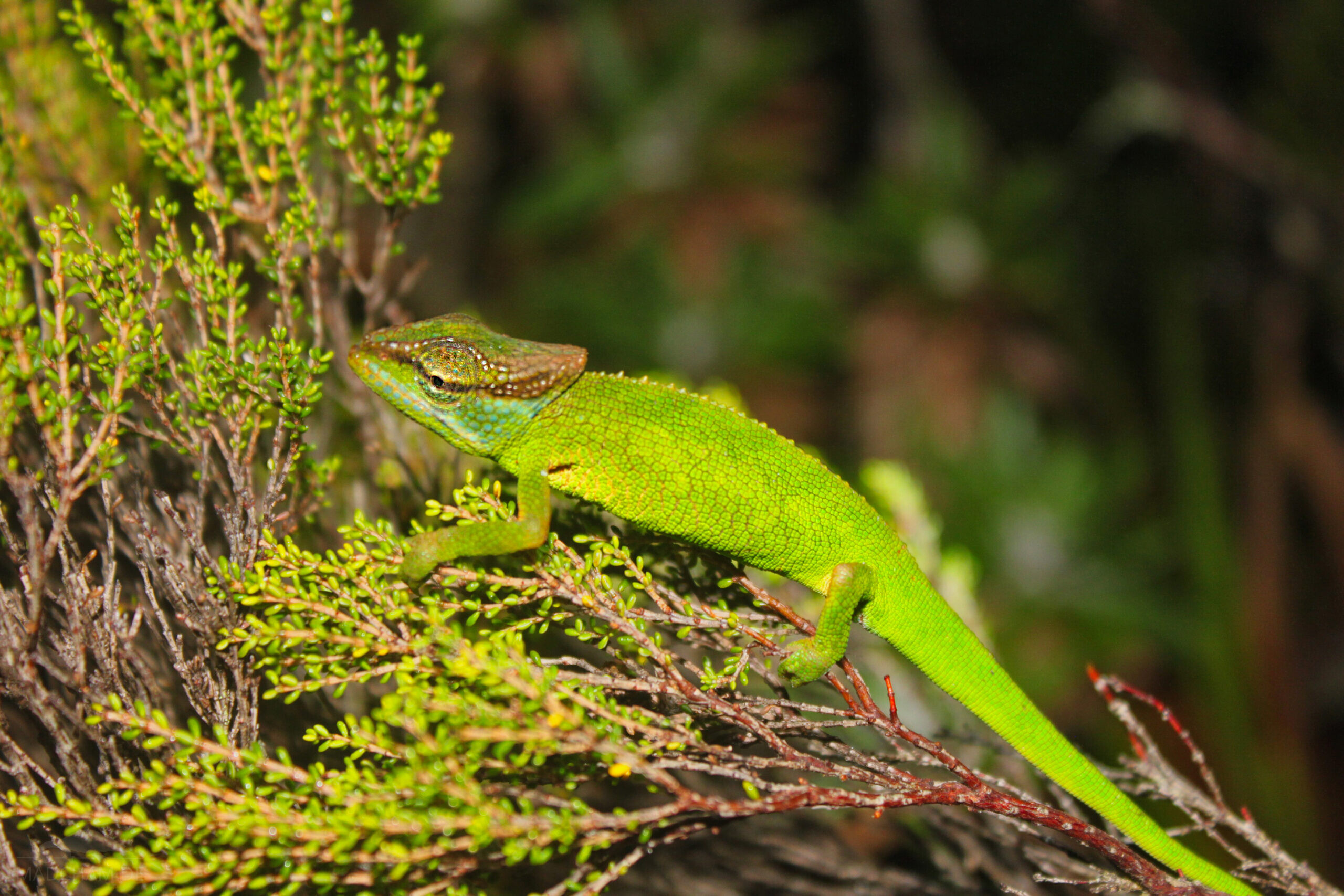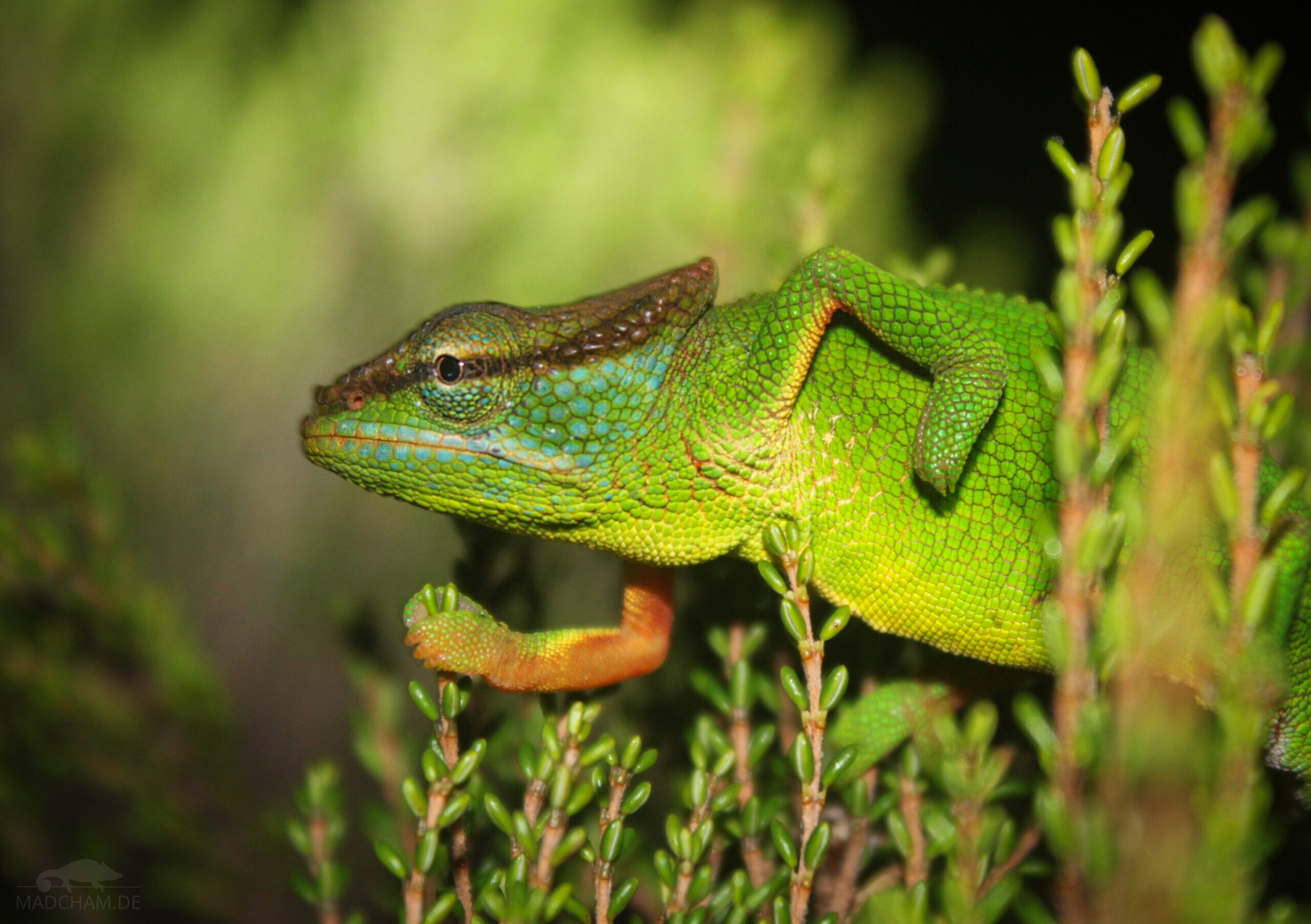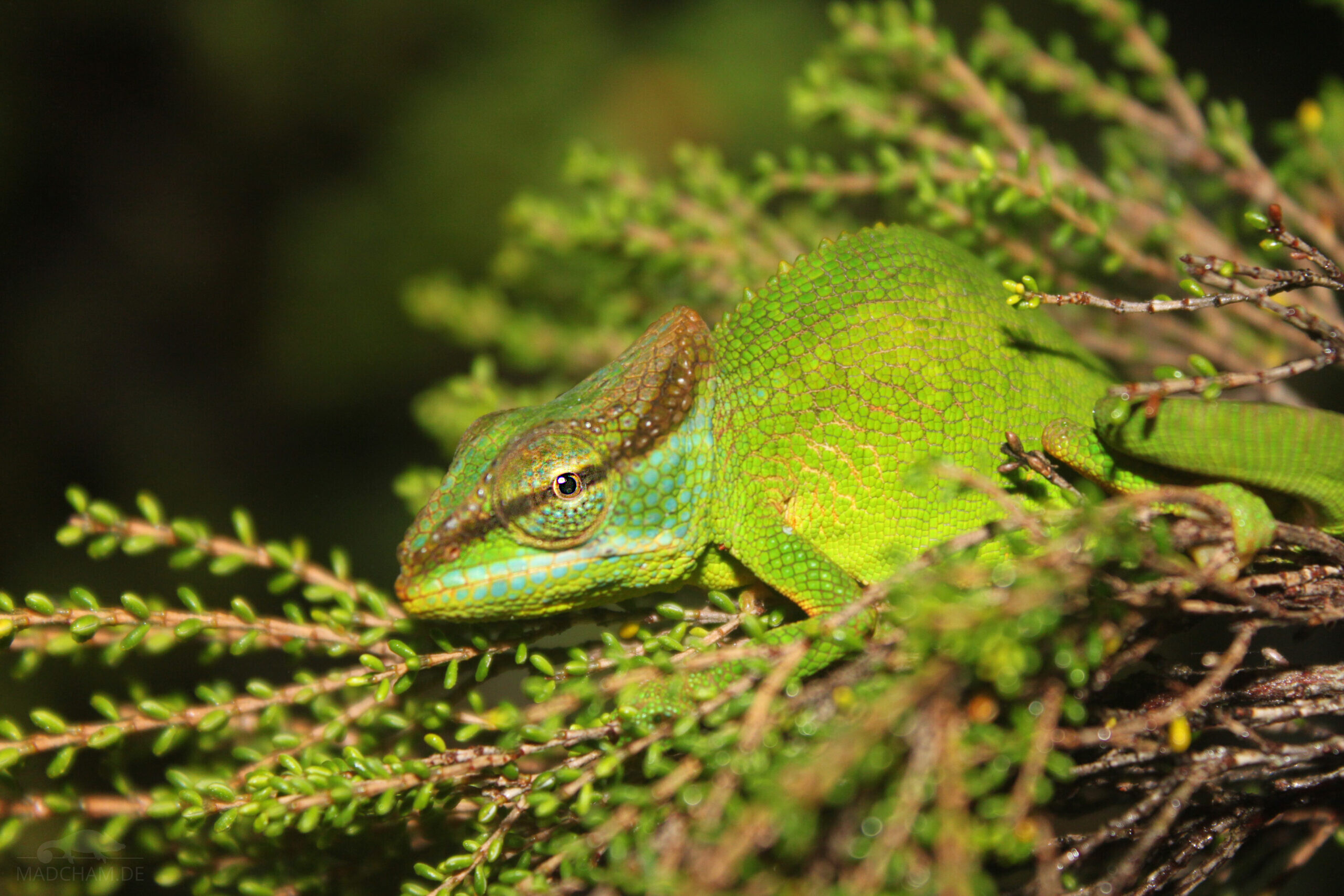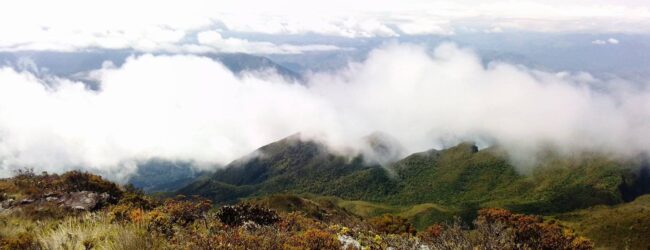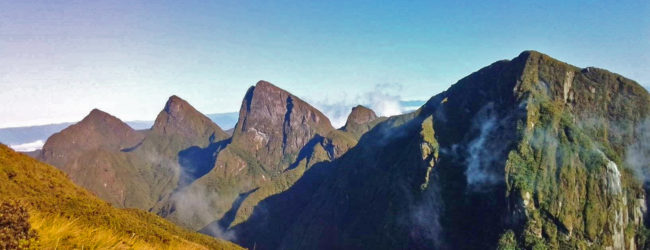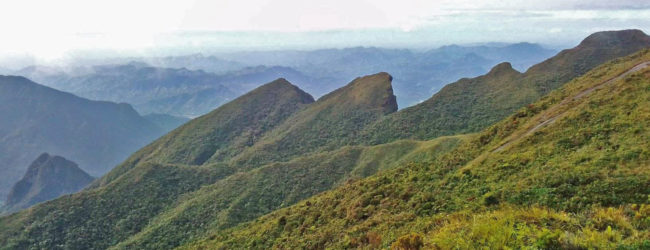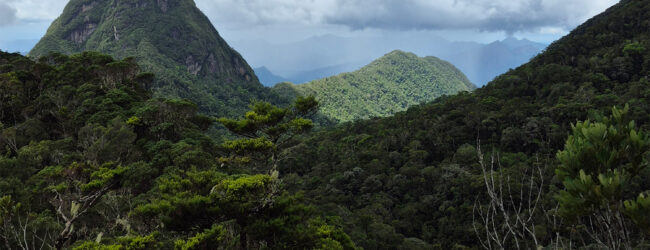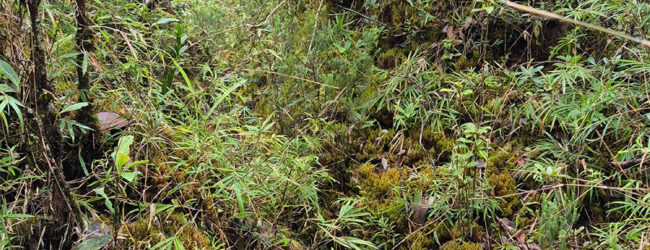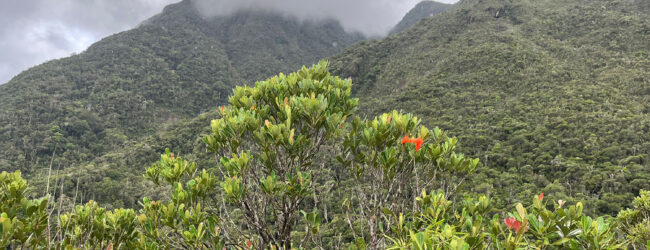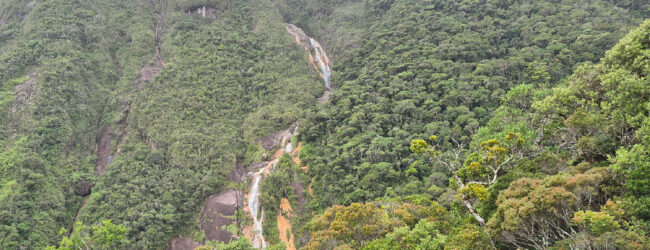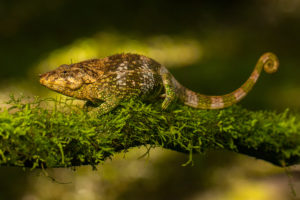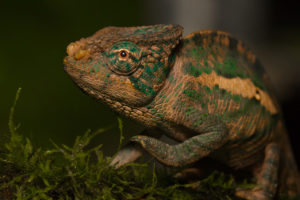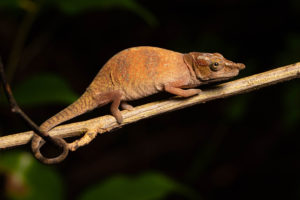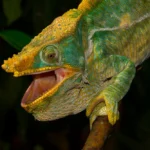no legal export possible
First description: 
(Brygoo, Blanc & Domergue, 1974)
Origin of the species name:
Édouard-Raoul Brygoo, Charles Pierre Blanc and Charles Antoine Domergue from the former Pasteur Institute in Antananarivo, Madagascar, dedicated the species to the French naturalist and biologist André Peyriéras. Peyriéras had been living in Madagascar since the 1950s. He undertook numerous expeditions on the island. In 1972, he took part in a research expedition as part of the so-called ‘RCP 225’. This expedition was initiated by the Centre national de la recherche scientifique (CNRS) in Paris, France, to discover new species. RCP was the abbreviation for ‘Recherches Coopératives dur Programme pour l’etude de la Flore et de la Faune des Hauts Sommets de Madagascar’, which translates as ‘Programme for the Study of the Flora and Fauna of the Highest Peaks of Madagascar’. On 30 November 1972, the first pair of Calumma peyrierasi was discovered on this expedition and subsequently sent to France.
Distribution:
Calumma peyrierasi occurs exclusively just below the summit of the Marojejy Mountains in north-eastern Madagascar. The species lives mainly in the unusual habitat between the edge of the montane rainforest and the area where almost only short grass and nothing else grows. The few finds of Calumma peyrierasi are therefore limited to altitudes of 1900 to 2000 m. The vegetation in this area is low and shrubby, partly resembling heathland. Gnarled saplings and shrubs grow to a maximum height of one and a half to two metres here. The endemic dwarf bamboo Oldeania marojejyensis grows in this area, as do various black-mouthed plants (Dichaetanthera spp.).
Marojejy is a national park that is very difficult to access. Travellers usually visit the two lower camps, which require several hours of walking to reach. However, Calumma peyrierasi only occurs much higher up. The summit is at 2,132 metres – even from the highest camp, it is still an hour-long, extremely strenuous climb to reach it. Therefore, only a few travellers venture to climb above Camp Simpona (the third camp) or even higher to the summit. And the few who make it to the top need a lot of luck with the weather, which changes very quickly up here, to find the chameleon. As a result, Calumma peyrierasi had only been photographed once or twice since 1972. We searched intensively for the species in Marojejy in both 2022 and 2025 and left identification material (laminated species descriptions and one of our field guides) on site. Shortly after our last stay, our local guide Franco Rajaoarison finally rediscovered Calumma peyrierasi. The photos above in the slider were taken by him (and are used here with his kind permission).
Appearance & size:
Calumma peyrierasi is one of the smaller chameleons. It reaches a length of only 10 to 11 cm from nose to tail tip, with females remaining even smaller at just under 9 cm. Both sexes have a raised crest that tapers towards the rear. In males, the rostral crest ends abruptly on both sides of the head and does not join together, but the two rostral crests do not extend beyond the upper lip. There is no parietal crest. A dorsal crest is only pronounced in males and ends at the base of the tail. There is no ventral crest in either sex.
Calumma peyrierasi are bright light green to yellow in colour, with only the insides of the extremities being reddish. A dark line runs from the tip of the nose to the tip of the helmet. Turquoise accents on the face are common. According to the original description, males have a bright yellow lateral stripe running across the body, in which two enlarged scales are embedded – we have not yet been able to see this. Females have a white belly stripe. Both sexes have a white area around the cloaca extending to the first third of the underside of the tail.
| Jan | Feb | Mär | Apr | Mai | Jun | Jul | Aug | Sep | Okt | Nov | Dez | |
| Durchschnittl. Temperatur | 26 | 26 | 26 | 25 | 25 | 23 | 23 | 22 | 23 | 24 | 25 | 26 |
| Minimale Temperatur | 24 | 24 | 23 | 23 | 22 | 21 | 20 | 19 | 20 | 21 | 22 | 24 |
| Maximale Temperatur | 30 | 29 | 29 | 29 | 28 | 27 | 25 | 25 | 25 | 27 | 28 | 30 |
| Regentage | 28 | 23 | 27 | 22 | 24 | 21 | 20 | 18 | 23 | 22 | 16 | 25 |
Die angegebenen Daten wurden von uns innerhalb mehrerer Jahre mit Thermo- und Hygrometern direkt an den Fundorten der Tiere gemessen und zusammengetragen. "Durchschnittliche Temperatur" bedeutet, dass die Werte eines gesamten Monats zu einem Durchschnittswert berechnet wurden, z.B. wurden alle gemessenen Minimalwerte eines Monats zu einem durchschnittlichen Minimalwert für Februar berechnet. Das bedeutet im Klartext, dass einzelne Spitzenwerte eines Tages deutlich höher oder niedriger als die durchschnittlichen Minimal- und Maximalwerte liegen können. Es ist also möglich, dass zwar das durchschnittliche Maximum bei 29 Grad liegt, es aber an einigen Tagen des Monats 33°C oder gar 35°C warm war.
Marojejy besteht vorwiegend aus einem Regenwald, der sich über das gleichnamige heilige Gebirge auf Höhen von 200 bis maximal 2100 m über Meeresniveau erstreckt. In den höchsten Gebieten ist das Klima kühl und die Vegetation karg, die meisten Chamäleons leben jedoch im wärmeren Regenwald darunter. Marojejy verfügt über verschiedene Höhenstufen, auf der jeweils eigene Arten in einem eigenen Klima leben. In der niedrigsten Höhenstufe ist es sehr warm und feucht, in den mittleren und höhen Lagen wird es etwas kühler, aber nicht weniger feucht.
In Marojejy gibt es nur wenig Unterschied zwischen Regen- und Trockenzeit. Die Luftfeuchtigkeit ist stetig sehr, sehr hoch. In der Regenzeit sind die Niederschläge ergiebiger, halten oft Tage an und gehen ab und zu mit schweren Stürmen einher. In der Trockenzeit liegen die Temperaturen etwas niedriger, richtig kalt wird es jedoch nie und es regnet immernoch fast täglich. Und trocken wird es in der Trockenzeit in Marojejy auch nicht. 2022 haben wir die relative Luftfeuchtigkeit an verschiedenen Tagen in der Regenzeit gemessen, die Daten finden sich im Folgenden.
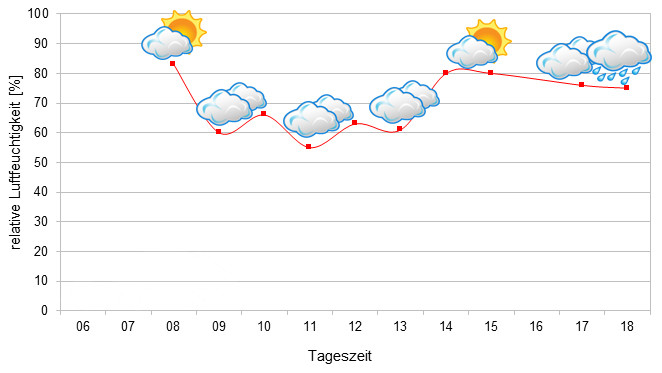
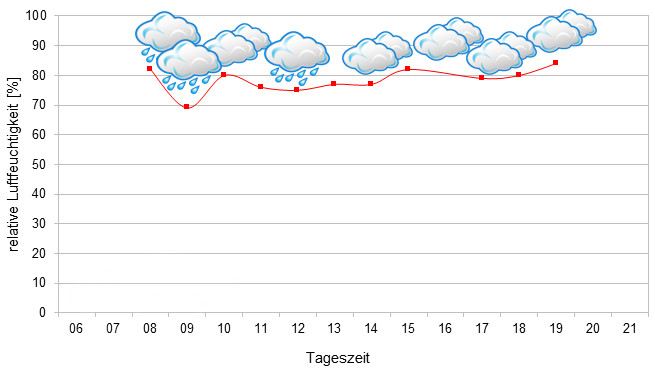
Die UVB-Daten wurden mit einem Solarmeter 6.5 in der Regenzeit, Ende März und Mitte April, zur höchsten Aktivitätszeit der Chamäleons gemessen. Gemessen wurden jeweils maximal für das Chamäleon zu erreichende Werte im Habitat.
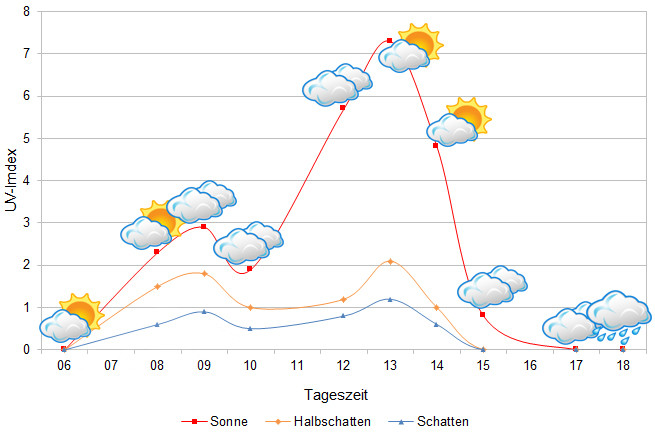
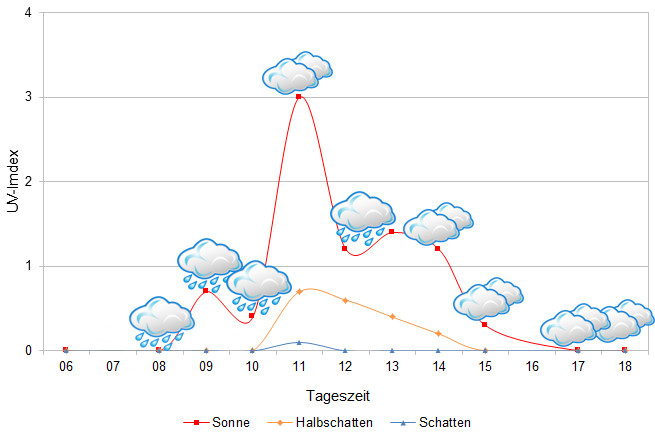
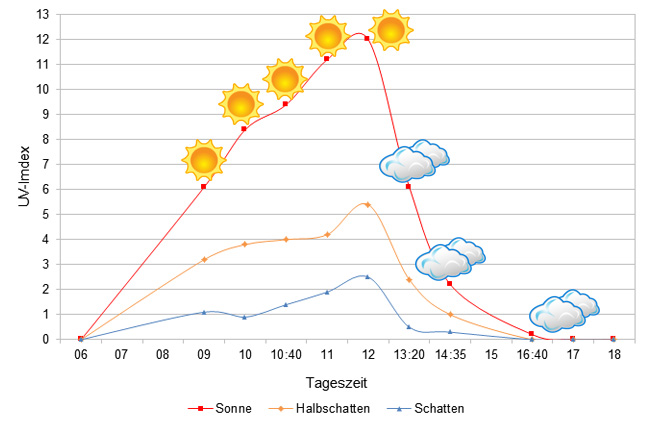
Seit 2022 messen wir zusätzlich zu anderen Klimadaten auch den Luftdruck an den von uns besuchten Orten auf Madagaskar. Die folgenden Daten stammen von verschiedenen Tagen während der Regenzeit. Auf der X-Achse befindet sich die Tages- oder Nachtzeit. Auf Madagaskar beginnt der Tag gegen 6 Uhr, die Nacht bricht bereits um 18 Uhr an. Die Y-Achse zeigt den atmosphärischen Luftdruck in hPa an.
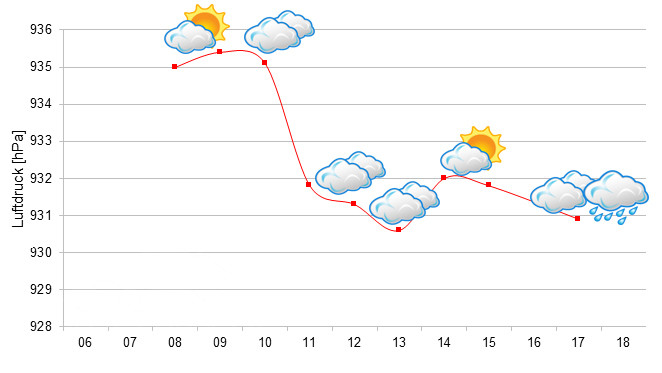
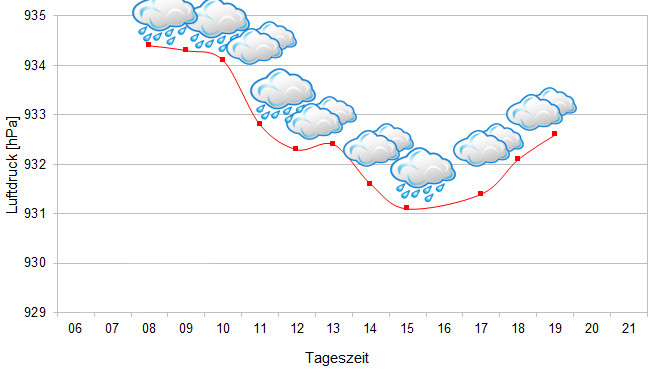
Habitat:
The habitat of Calumma peyrierasi is extremely unusual, even for Madagascar. Above the rainforest, the vegetation consists of a kind of steep heathland with low, gnarled, thick-leaved shrubs and herbaceous ground cover. The few plants are virtually defenceless against wind and weather. Accordingly, this barren landscape dries out so much during the dry season that only yellow grasses remain. This is a stark contrast to the lush rainforest a few hundred metres below, which remains constantly moist. The ground around the summit of Marojejy is extremely stony and rocky.

